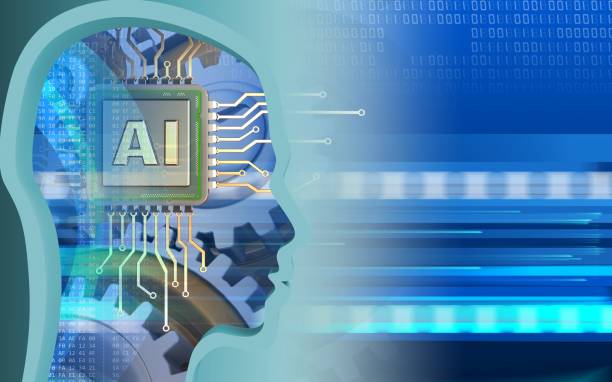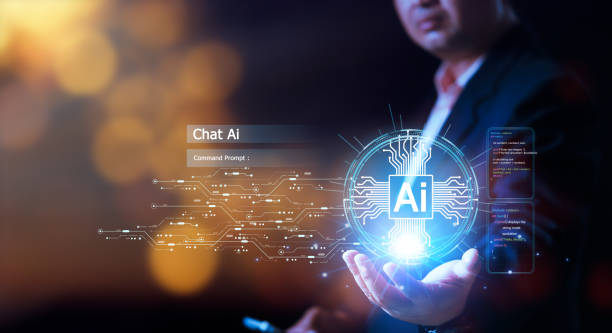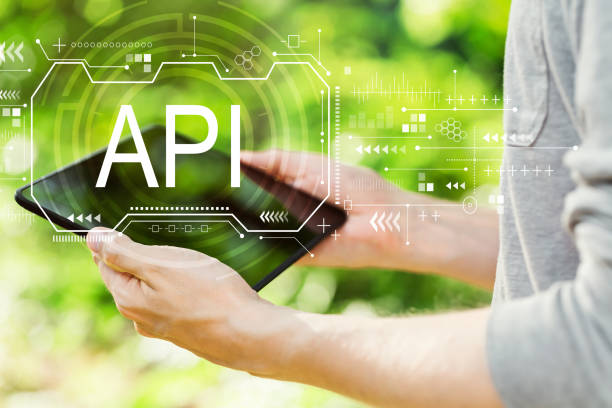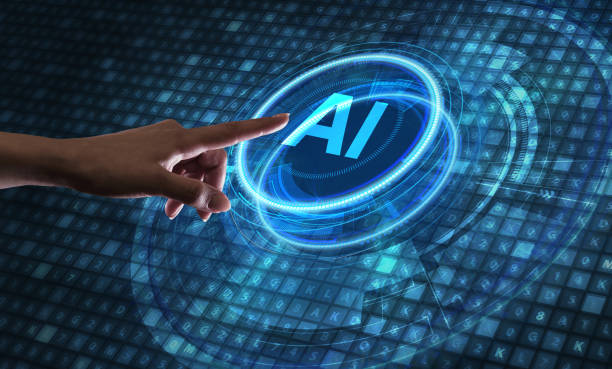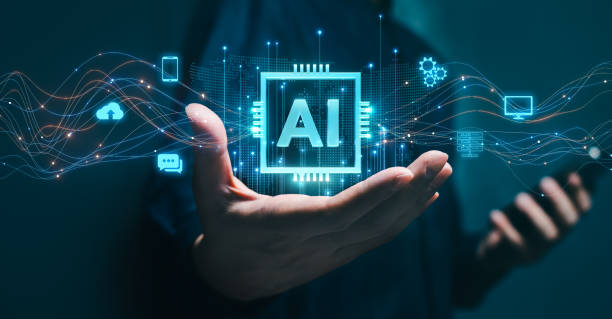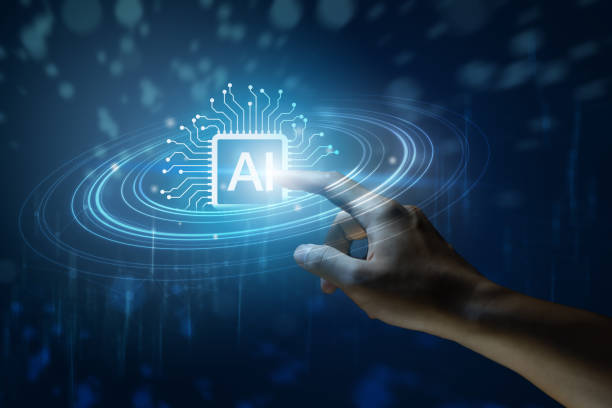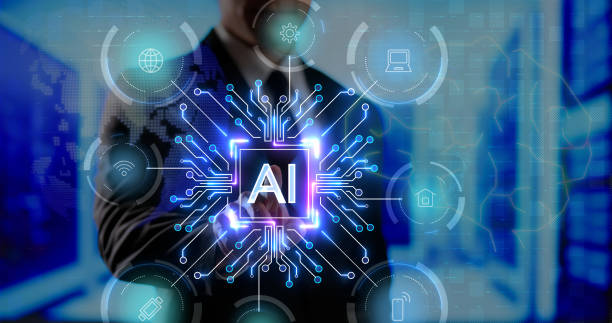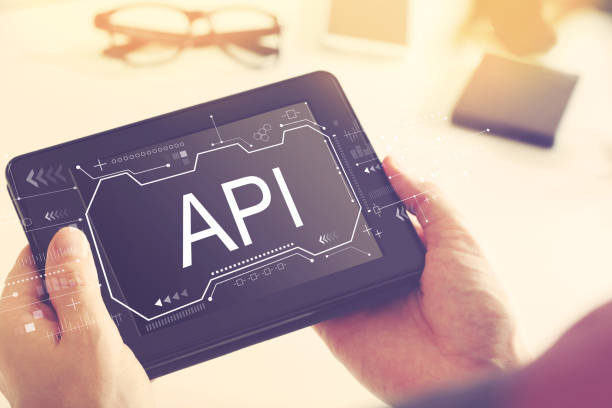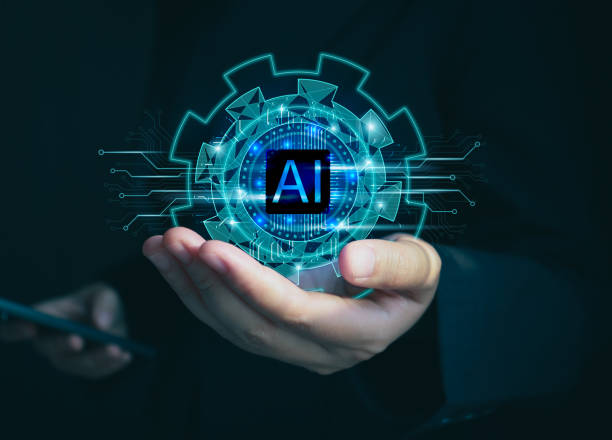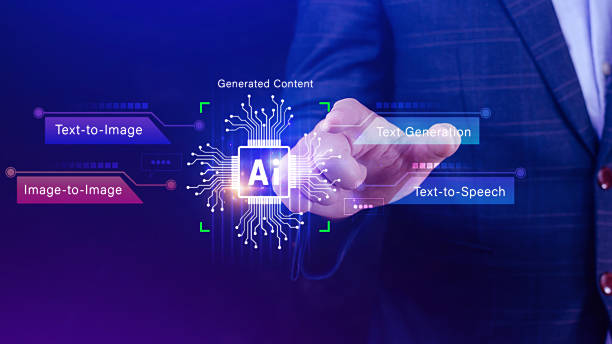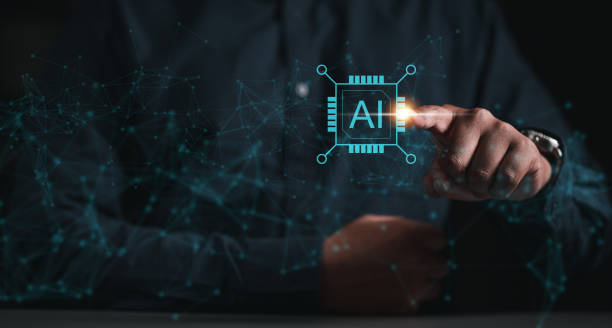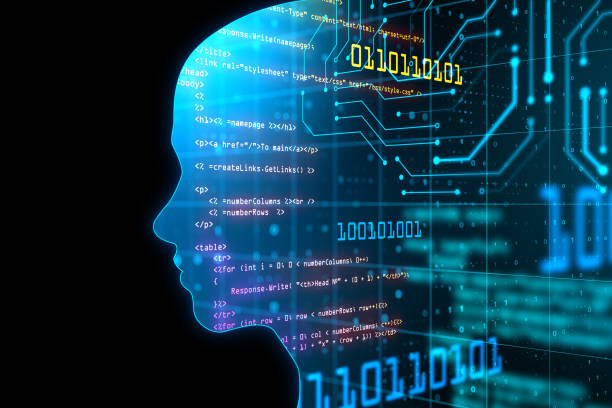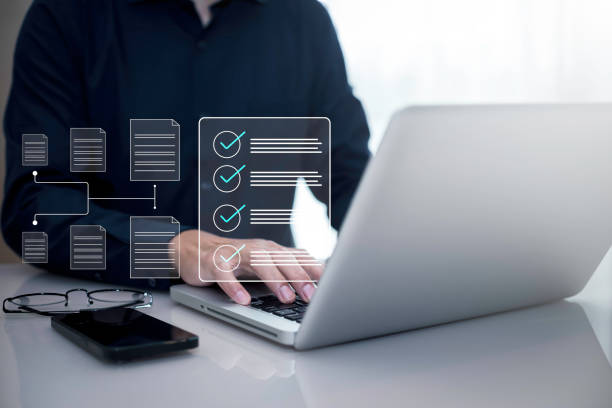What is an artificial intelligence robot and how does it work?
What is an artificial intelligence robot and how does it work?
An #ArtificialIntelligenceRobot is a system based on artificial intelligence that is capable of performing tasks that typically require human intelligence.
These robots use algorithms and machine learning models to analyze data, make decisions, and take actions.
In other words, an #AI robot tries to mimic human cognitive abilities such as learning, reasoning, problem-solving, and language comprehension.
How an artificial intelligence robot works
An AI robot consists of several main components that work together to perform various tasks:
- Sensors Sensors collect information from the environment.
This information can include images, sounds, tactile data, and other types of sensory data. - Processor The processor analyzes the information collected by the sensors.
This analysis includes the use of machine learning algorithms and artificial intelligence models to identify patterns, extract useful information, and make decisions. - Motion motors Motion motors allow the robot to move in the environment and perform physical actions.
These motors can include electric motors, hydraulic systems, and other types of motion mechanisms. - Software The software includes machine learning algorithms, artificial intelligence models, and control programs that determine the robot’s performance.
These software programs enable the robot to perform various tasks and interact with the environment.
Examples of the application of artificial intelligence robots
- Self-driving cars These cars use AI robots to analyze sensor data, make decisions about the route, and control the car.
- Industrial robots These robots are used in factories to perform repetitive and dangerous tasks.
- Service robots These robots are used in hospitals, hotels, and other service environments to provide services to customers.
Artificial intelligence robots are evolving, and with the advancement of technology, their applications are expected to become more widespread.
Artificial intelligence has the potential to improve our lives in many ways.
Are you unhappy with the low sales of your online store?
Rasaweb is your solution to having a professional and high-selling online store.
✅ Significant increase in sales and revenue
✅ Easy and enjoyable shopping experience for customers
⚡ Get a free consultation from Rasaweb right now!
Main components of an artificial intelligence robot
Click here to preview your posts with PRO themes ››
Main components of an artificial intelligence robot
An #AI robot consists of several basic components, each of which plays an important role in its overall performance.
These components include sensors, processor, motion motors, and software.
Each of these components performs specific tasks that ultimately allow the robot to interact with the environment and perform the desired tasks.
Sensors
Sensors are responsible for collecting information from the surrounding environment.
This information can include images, sounds, tactile data, temperature, pressure, and other sensory data.
Sensors allow the robot to be aware of environmental conditions and make decisions based on them.
There are different types of sensors, each designed to collect a specific type of information.
For example, cameras are used to collect images, microphones to collect sounds, and tactile sensors to collect tactile data.
Processor
The processor (Processing Unit) is the brain of the robot and is responsible for analyzing the information collected by the sensors.
The processor uses machine learning algorithms and artificial intelligence models to identify patterns, extract useful information, and make decisions.
The power of the processor determines the speed and accuracy of the robot in performing tasks.
The processor can be a computer, a microcontroller, or a dedicated processor.
Motion motors
Motion motors (Actuators) allow the robot to move in the environment and perform physical actions.
These motors can include electric motors, hydraulic systems, pneumatic systems, and other types of motion mechanisms.
The type of motion motors used in a robot depends on the type of tasks that the robot must perform.
For example, an industrial robot that has to move heavy objects needs stronger motion motors.
Software
Software includes machine learning algorithms, artificial intelligence models, and control programs that determine the robot’s performance.
These software programs enable the robot to perform various tasks and interact with the environment.
The software can include the operating system, hardware drivers, and application programs.
Click here to preview your posts with PRO themes ››
The combination of these components allows an #AI robot to perform complex tasks and interact with the environment.
With the advancement of technology, the components of robots have improved, and robots are able to perform more tasks.
Artificial intelligence plays a key role in the development of these robots.
Machine learning and its role in the development of intelligent robots
Machine learning and its role in the development of intelligent robots
Machine learning is one of the main sub-branches of artificial intelligence, which plays a very important role in the development of intelligent robots.
Machine learning allows robots to learn from data and improve their performance without explicit programming.
This capability allows robots to adapt to new conditions and perform more complex tasks.
Types of machine learning
Machine learning is generally divided into three main categories:
- Supervised learning In this type of learning, the robot is trained using labeled data.
In other words, the robot receives examples of the desired input and output and tries to create a model that can predict the output for new inputs. - Unsupervised learning In this type of learning, the robot is trained using unlabeled data.
The robot tries to identify patterns and hidden structures in the data. - Reinforcement learning In this type of learning, the robot is trained using trial and error.
The robot performs a series of actions and, based on the feedback it receives, learns which actions lead to rewards and which actions lead to penalties.
The role of machine learning in intelligent robots
Machine learning is used in various areas of intelligent robot development:
- Machine vision Robots use machine learning to analyze images and identify objects.
- Natural language processing Robots use machine learning to understand and generate natural language.
- Motion control Robots use machine learning to control their movements and perform complex tasks.
- Decision making Robots use machine learning to make decisions about how to perform their tasks.
Click here to preview your posts with PRO themes ››
Using machine learning, #AI robots can continuously improve their performance and adapt to new conditions.
This capability allows robots to be used in various fields such as industry, medicine, services, and agriculture.
| Type of learning | Description | Application in robotics |
|---|---|---|
| Supervised learning | Using labeled data to train the robot | Object detection, image classification |
| Unsupervised learning | Using unlabeled data to identify patterns | Data clustering, dimensionality reduction |
| Reinforcement learning | Using trial and error to learn through feedback | Motion control, path planning |
Applications of artificial intelligence robots in industry
Applications of artificial intelligence robots in industry
#AI robots are widely used in industry and play an important role in increasing productivity, reducing costs, and improving product quality.
These robots are capable of performing repetitive, dangerous, and complex tasks and can work continuously and without fatigue.
The use of artificial intelligence robots in industry leads to increased production speed, reduced human errors, and improved working conditions.
Some applications of artificial intelligence robots in industry
- Production lines Robots are used in production lines to perform tasks such as assembly, welding, painting, and packaging.
These robots can work continuously and with high accuracy, leading to increased production speed and reduced costs. - Quality inspection Robots using machine vision and other sensors can inspect products and identify defects.
These robots can automatically remove defective products from the production line and prevent the entry of substandard products into the market. - Warehousing and logistics Robots are used in warehouses to move and sort goods.
These robots can automatically pick up goods from shelves and move them to the desired location. - Machining Robots can be used to machine complex parts with high accuracy.
These robots can automatically change tools and machine parts at different angles. - Quality control Robots help to check and evaluate the quality of products and are able to automatically detect errors and defects.
With the advancement of technology, the applications of artificial intelligence robots in industry are expected to become more widespread.
Robotics and artificial intelligence help industries increase their productivity and improve their competitiveness.
Are you tired of your online store website not being able to generate as much revenue as its potential allows? Rasaweb, specializing in professional online store website design, solves this problem forever!
✅ Increase sales rate and revenue
✅ High loading speed and unparalleled user experience
⚡ Get a free online store website design consultation
Artificial intelligence robots in medicine and healthcare
Artificial intelligence robots in medicine and healthcare
Artificial intelligence robots play an important role in improving medical and healthcare services.
These robots are capable of performing various tasks including surgery, disease diagnosis, patient care, and rehabilitation.
The use of artificial intelligence robots in medicine leads to increased accuracy, reduced human errors, and improved treatment outcomes.
Some applications of artificial intelligence robots in medicine and healthcare
- Surgery Surgical robots allow doctors to perform complex operations with high precision and minimal invasiveness.
These robots can eliminate the doctor’s hand tremor and provide access to difficult areas of the body. - Disease diagnosis Robots using machine learning algorithms can analyze medical images and diagnose diseases with high accuracy.
These robots can help doctors diagnose diseases early and increase treatment opportunities. - Patient care Robots can be used in hospitals and patient care centers to perform tasks such as dispensing medication, measuring vital signs, and assisting patients in moving.
These robots can help nurses spend more time providing direct patient care. - Rehabilitation Robots can be used in rehabilitation programs to help patients regain their motor function.
These robots can automatically perform rehabilitation exercises and provide immediate feedback to patients.
With the advancement of technology, the applications of artificial intelligence robots in medicine and healthcare are expected to become more widespread.
These robots have the potential to improve medical services and help patients live healthier lives.
#AI robots play an important role in facilitating the delivery of healthcare services.
The future of artificial intelligence robots and the challenges ahead
The future of artificial intelligence robots and the challenges ahead
The future of artificial intelligence robots is very bright and full of potential.
With the advancement of technology, robots are expected to be able to perform more complex tasks and play a more important role in various areas of our lives.
However, the development and use of artificial intelligence robots also bring challenges that need to be addressed.
Future predictions
- Expansion of applications Robots will find more applications in various fields such as industry, medicine, services, agriculture, and transportation.
- Increasing intelligence Robots will be able to learn, reason, and solve problems independently.
- Improving interaction Robots will be able to interact with humans more naturally and effectively.
- Reducing costs The costs of developing and producing robots will decrease, and their use will become more cost-effective.
The challenges ahead
- Ethical issues The use of robots raises important ethical questions, such as the accountability of robots in the event of errors, the protection of privacy and data security, and the impact of robots on employment.
- Security Robots must be protected against cyber attacks and misuse.
- Regulation There is a need to develop appropriate regulations and standards for the development and use of robots.
- Public acceptance Efforts should be made to reduce public concerns about robots and increase their public acceptance.
To fully exploit the potential of #AI robots and prevent problems from arising, these challenges must be addressed and appropriate solutions must be provided.
The future of life will be affected by this technology.
Artificial intelligence robots and their impact on the labor market
Artificial intelligence robots and their impact on the labor market
One of the important and controversial topics regarding artificial intelligence robots is their impact on the labor market.
With the increasing use of robots in various industries, there are concerns about job losses and increased unemployment.
However, some believe that robots can also create new job opportunities.
Positive impacts
- Creating new jobs The development and maintenance of robots requires new specialists who are specialized in fields such as robotics engineering, artificial intelligence, programming, and maintenance.
- Increasing productivity Robots can increase productivity and lead to economic growth.
This economic growth can create new job opportunities in other sectors of the economy. - Improving working conditions Robots can perform repetitive, dangerous, and strenuous tasks, allowing humans to focus on more creative and valuable tasks.
Negative impacts
- Job losses Robots can replace human labor in some jobs, especially jobs that are repetitive and automatable.
- Need for retraining The workforce must be retrained and acquire new skills to adapt to the changes caused by automation.
- Increasing inequality If the benefits of automation are not distributed fairly, economic inequality may increase.
To reduce the negative impacts of automation on the labor market, appropriate policies must be adopted.
These policies can include investing in education, providing retraining programs, supporting entrepreneurship, and creating social safety nets.
The International Labor Organization provides guidance in this area.
#AI robots can help transform the labor market.
Security and privacy in artificial intelligence robots
Security and privacy in artificial intelligence robots
With the increasing use of artificial intelligence robots, issues related to security and privacy become more important.
Robots can collect, process, and transmit sensitive information, and if appropriate security measures are not taken, this information may be at risk.
Security threats
- Cyber attacks Robots may be the target of cyber attacks, and hackers can gain control of the robot and use it for malicious purposes.
- Data theft The information collected by robots may be stolen and misused.
- Software flaws Flaws in the robot’s software may cause the robot to malfunction or allow hackers to gain access to the system.
Privacy issues
- Collecting information Robots may collect a lot of information about people, such as personal information, location information, and behavioral information.
- Using information The information collected by robots may be used for purposes that people are not aware of or do not agree with.
- Protecting information The information collected by robots must be stored securely and protected from unauthorized access.
To maintain security and privacy in artificial intelligence robots, appropriate security measures must be taken.
These measures can include the use of encryption, strong authentication, regular software updates, and user education on security issues.
#AI robots require serious attention to security and privacy.
| Threat | Description | Solution |
|---|---|---|
| Cyber attacks | Unauthorized access to the robot and its control | Encryption, strong authentication, firewall |
| Data theft | Theft of sensitive information collected by the robot | Data encryption, access control |
| Software flaws | Disruption of robot performance due to software bugs | Regular software updates, security testing |
Are you tired of your online store having visitors but no sales? Rasaweb solves your main problem with professional online store website design!
✅ Significant increase in sales with targeted design
✅ Flawless user experience for your customers
⚡ Get a free consultation!
How to set up an artificial intelligence robot
How to set up an artificial intelligence robot
Setting up an #AI robot is a complex process that requires knowledge and skills in various fields such as robotics, artificial intelligence, programming, and electronics.
Here is a general guide to setting up an artificial intelligence robot:
- Define the goal First, you need to determine the goal of setting up the robot.
What will the robot be used for? What tasks should it perform? - Select hardware Based on the defined goal, select the appropriate hardware.
This hardware can include sensors, a processor, motion motors, and other electronic components. - Select software Select the software needed to control the robot and run the artificial intelligence algorithms.
This software can include the operating system, hardware drivers, and application programs. - Programming Write the necessary programs to control the robot and run the artificial intelligence algorithms.
- Training Train the machine learning algorithms using appropriate data.
- Testing Thoroughly test the robot to ensure that it is functioning correctly.
- Optimization Optimize the robot’s performance using various optimization techniques.
In this process, Raspberry Pi is a popular option for the processor.
#AI robots require careful planning and execution.
Resources and tools needed to develop an artificial intelligence robot
Resources and tools needed to develop an artificial intelligence robot
Developing an #AI robot requires the use of various resources and tools.
These resources and tools can include hardware, software, libraries, frameworks, data, and educational resources.
Hardware
- Sensors To collect information from the environment.
- Processor To analyze information and make decisions.
- Motion motors To move and perform physical actions.
- Development boards such as Raspberry Pi and Arduino to control the robot.
Software
- Operating system such as Linux and Windows.
- Programming languages such as Python, C++, and Java.
- Integrated development environments such as Visual Studio Code and Eclipse.
Libraries and frameworks
- TensorFlow An open-source library for machine learning.
- PyTorch An open-source framework for machine learning.
- OpenCV An open-source library for machine vision.
- ROS An open-source framework for robotics development.
Data
- Training datasets To train machine learning algorithms.
- Data collected from the environment To test and optimize the robot’s performance.
Educational resources
- Online courses such as Coursera and edX.
- Books and scientific articles.
- Online forums and groups.
Using these resources and tools, you can develop an #AI robot and use its potential to solve various problems.
GitHub is a good source for finding open-source projects and useful libraries.
Frequently Asked Questions
| Row | Question | Answer |
|---|---|---|
| 1 | What is an artificial intelligence robot? | An artificial intelligence robot is a machine capable of understanding, reasoning, learning, and problem-solving, and can perform complex tasks with relative autonomy. |
| 2 | What are the most important applications of artificial intelligence robots? | Main applications include industrial production, customer service (chatbots), medicine and surgery, self-driving transportation, space exploration, and military affairs. |
| 3 | What is the main difference between an artificial intelligence robot and a regular robot? | A regular robot only follows programmed instructions, while an artificial intelligence robot can learn from data, make decisions, and adapt to new environments. |
| 4 | How do artificial intelligence robots learn? | They identify patterns and improve their performance through machine learning algorithms (such as deep learning, reinforcement learning) and processing a vast amount of data. |
| 5 | Can artificial intelligence robots have emotions? | Currently, artificial intelligence robots do not have real emotions in the human sense. They can mimic or recognize emotions, but they do not understand or experience them. |
| 6 | What are the current limitations of artificial intelligence robots? | Limitations include the need for a lot of data, the inability to understand abstract concepts, the lack of real creativity, ethical issues, and the challenges of generalizability in new environments. |
| 7 | What is the role of artificial intelligence in the development of humanoid robots? | Artificial intelligence helps humanoid robots walk, maintain their balance, understand the surrounding environment, interact with humans, and perform complex tasks. |
| 8 | How is the future of artificial intelligence robots predicted? | It is predicted that artificial intelligence robots will become smarter, more autonomous, and capable of performing more complex tasks in daily life and industry, and their interaction with humans will increase. |
| 9 | Can artificial intelligence robots replace all human jobs? | It is unlikely that all human jobs will be replaced. Robots take over many repetitive and dangerous tasks, but jobs that require creativity, empathy, and moral judgment will remain. |
| 10 | What ethical and social challenges are raised by the expansion of artificial intelligence robots? | Challenges include issues related to privacy, data security, ethical decision-making by robots, the impact on employment, and accountability in the event of errors. |
And other services of Rasa Web advertising agency in the field of advertising
Smart custom software: A combination of creativity and technology to increase the click-through rate by using real data.
Smart Marketplace: Professional optimization for digital branding using real data.
Smart Advertising Campaign: A quick and efficient solution for user interaction with a focus on smart data analysis.
Smart Advertising Campaign: Transform online growth with the help of Google Ads management.
Smart Social Media: A dedicated service to grow sales based on accurate audience targeting.
And more than hundreds of other services in the field of internet advertising, advertising consulting, and organizational solutions
Internet Advertising | Advertising Strategy | Advertorial
Resources
What is Artificial Intelligence?
,What is an artificial intelligence robot and what is its application?
,Intelligent Robot
,Let’s know with the intelligent Walkman robot
? Rasaweb Afarin, your strategic partner in the digital world. From search engine optimization to multilingual website design and content marketing, we guarantee the growth and visibility of your business.
📍 Tehran, Mirdamad Street, next to the Central Bank, South Kazerun Alley, Ramin Alley No. 6

